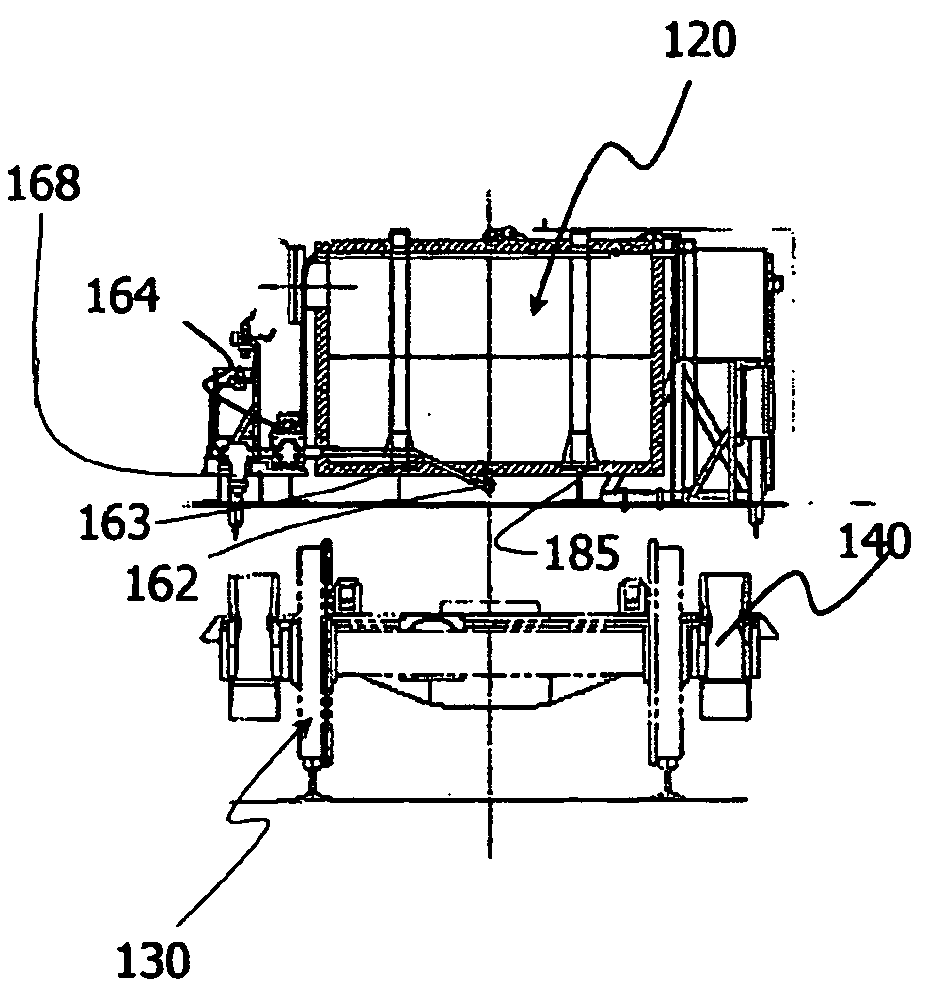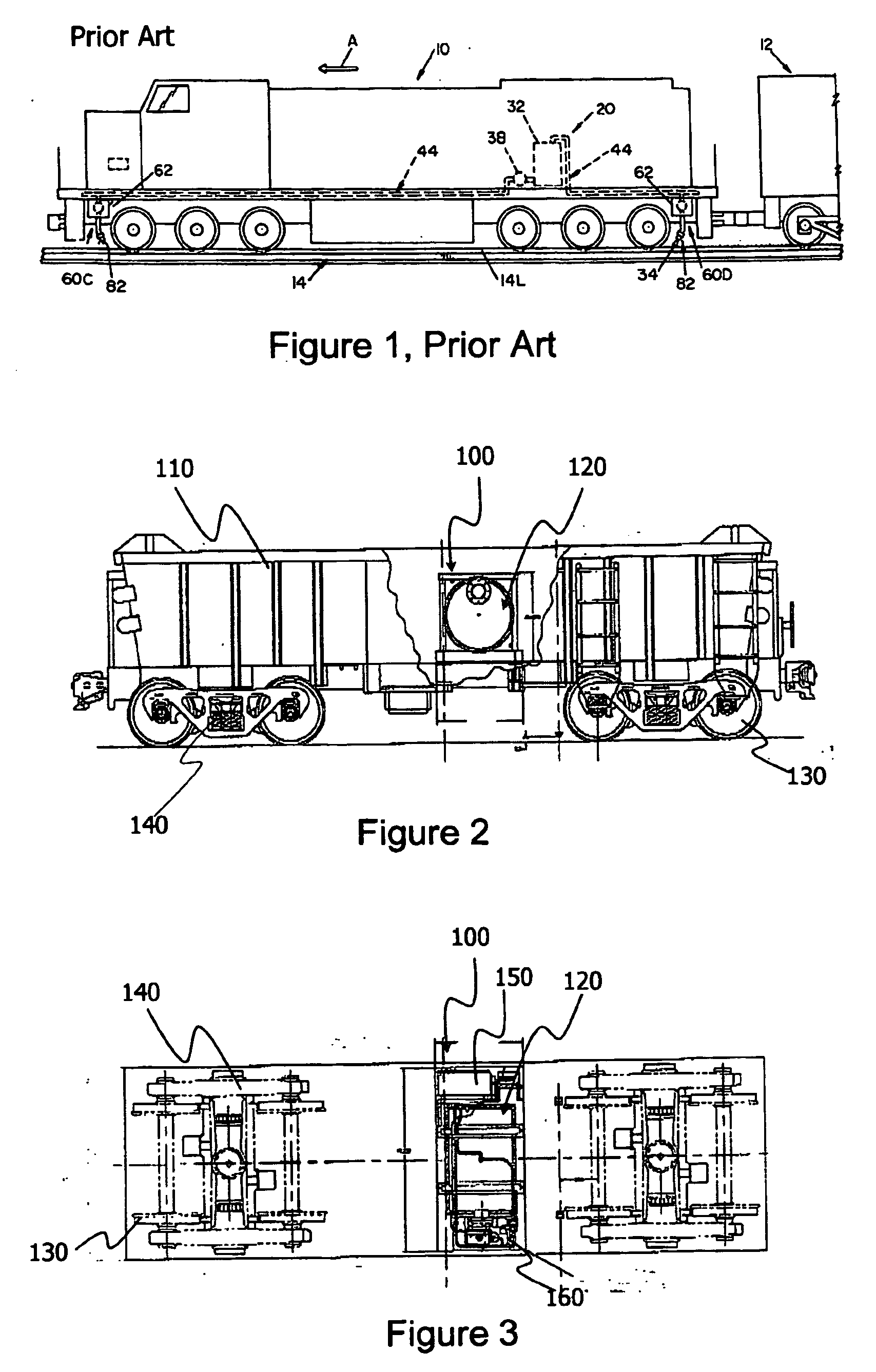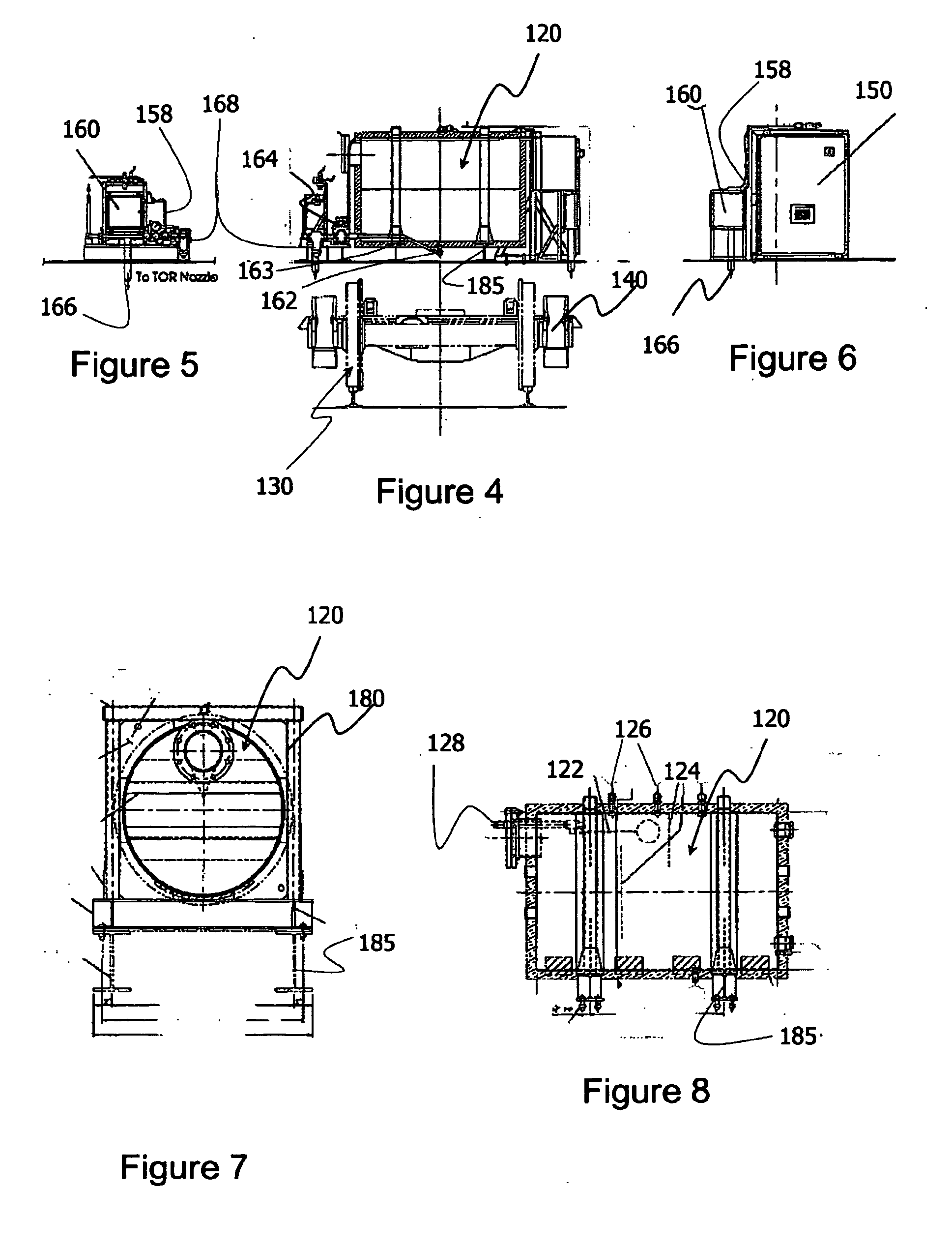Method And Apparatus For Applying Liquid Compositions In Rail Systems
a liquid composition and rail system technology, applied in the direction of rail lubrication, process and machine control, instruments, etc., can solve the problems of high noise level, inability to move between the wheel and the rail, and inability to fix the axle of the railcar, so as to increase the capacity of the railcar
- Summary
- Abstract
- Description
- Claims
- Application Information
AI Technical Summary
Benefits of technology
Problems solved by technology
Method used
Image
Examples
Embodiment Construction
[0062] The present invention relates to liquid composition application systems used in rail systems.
[0063] The following description is of a preferred embodiment.
[0064] In railway industry, especially for the transport of freights, one or more locomotives can be physically connected together, with one locomotive designated as a lead locomotive and the others as trailing locomotives, this is usually called a ‘locomotive consist’. A ‘train’ or a ‘train consist’ means a combination of revenue generating cars (RGC; also called rail cars), and a locomotive consist. A rail car can be a passenger car or a freight car for example, but not limited to, a flat bed car, a refrigerated car, a bulk materials car for example an ore car, a chemical car, a seed or agricultural materials car, or a box car. Freight cars may unload by tipping. A common characteristic of a rail car is that it is not self-propelled. In contrast, a locomotive, or a mobile liquid composition delivery device such as the o...
PUM
 Login to View More
Login to View More Abstract
Description
Claims
Application Information
 Login to View More
Login to View More - R&D
- Intellectual Property
- Life Sciences
- Materials
- Tech Scout
- Unparalleled Data Quality
- Higher Quality Content
- 60% Fewer Hallucinations
Browse by: Latest US Patents, China's latest patents, Technical Efficacy Thesaurus, Application Domain, Technology Topic, Popular Technical Reports.
© 2025 PatSnap. All rights reserved.Legal|Privacy policy|Modern Slavery Act Transparency Statement|Sitemap|About US| Contact US: help@patsnap.com



